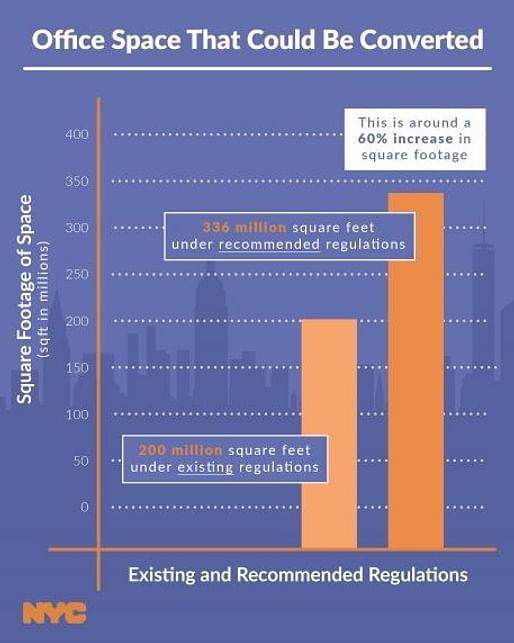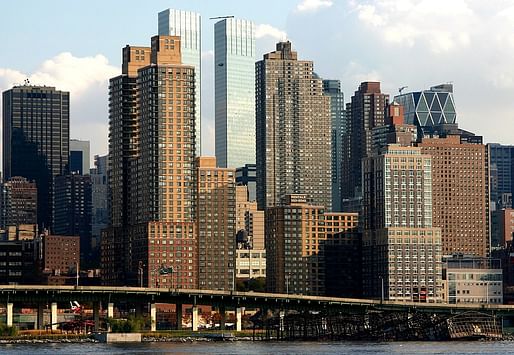
New York City Mayor Eric Adams has unveiled an ambitious plan to help convert the city’s unused office spaces into apartment dwellings in an effort to bring online 40,000 new units of housing in the next decade.
The plan, which includes a new study and 11 “concrete recommendations” made by the new Adaptive Reuse Task Force announced by Adams over the summer, will target a total of 136 million square feet of office space for conversions using updates to state laws and local zoning codes under the leadership of Department of City Planning Director Dan Garodnick.
Adams said the effort offers a “roadmap to deliver on a vision for a more vibrant, resilient, prosperous, and affordable city.” Its effectiveness in combating the city's dual housing crisis and expected economic downturn is vital to Adams' success in office and can potentially be seen as a bellwether for other cities as they attempt to find their own answers to the changes made to the urban environment following COVID.

According to the Mayor’s office, the Task Force’s recommendations include:

The plan joins a trio of other policy measures — including the “Get Stuff Built,” “City of Yes,” and “Housing Our Neighbors” — announced in the past 12 months by the administration. In a press statement, Garodnick said: “Our ability to remain a global leader in a rapidly evolving and changing economy will depend on our ability to adapt.”
“When I first introduced the office conversion bill years ago, I had a simple question: Could we actually convert vacant office space into residential housing for New Yorkers? From our city’s uniquely high volume of office space to pandemic conditions that made people miss rent payments and made homelessness more perilous than ever, we thought there were a number of unique factors that made the answer a likely yes,” City Councilmember Justin Brannan added. “74% of New Yorkers have said they would support the conversion of current office space into housing in Midtown and Downtown Manhattan. Now that the task force has completed a report that gives us a clear roadmap forward, I can’t wait to dig into it with my colleagues and chip away at longstanding citywide problems by putting vacant space to good use.”
4 Comments
I'm glad the Appendices note that there are several hurdles in office to residential conversions. It's been bandied around way too much as a panacea in the mainstream press - cue the moans of "Why are we not funding this???" A successful office to residential conversion is a marvel but it doesn't come easy!
95 percent of the office to residential projects I've toured are drab collections of boxy little rooms. Most of them are places where people rent for a year or two and then get the hell out of them in favor of something nicer.
I'd add that there are some pretty good conversions - but they are luxury condos in prime locations rather than the affordable rentals portrayed in the press. Sometimes, the developer had to spend so much that the only way to eak out a profit is to go premium. There is a very tough sweet spot where architecture, MEP, structure, code, interest rates, zoning and local politics come together to create a successful conversion adding to the stock of mid-market housing. But it is tough.
In theory these luxury condos will absorb part of the market that would otherwise take housing from those further down the economic ladder but I'm not sure. Either way it's a good way to absorb the excess office space in all the right locations.
Block this user
Are you sure you want to block this user and hide all related comments throughout the site?
Archinect
This is your first comment on Archinect. Your comment will be visible once approved.